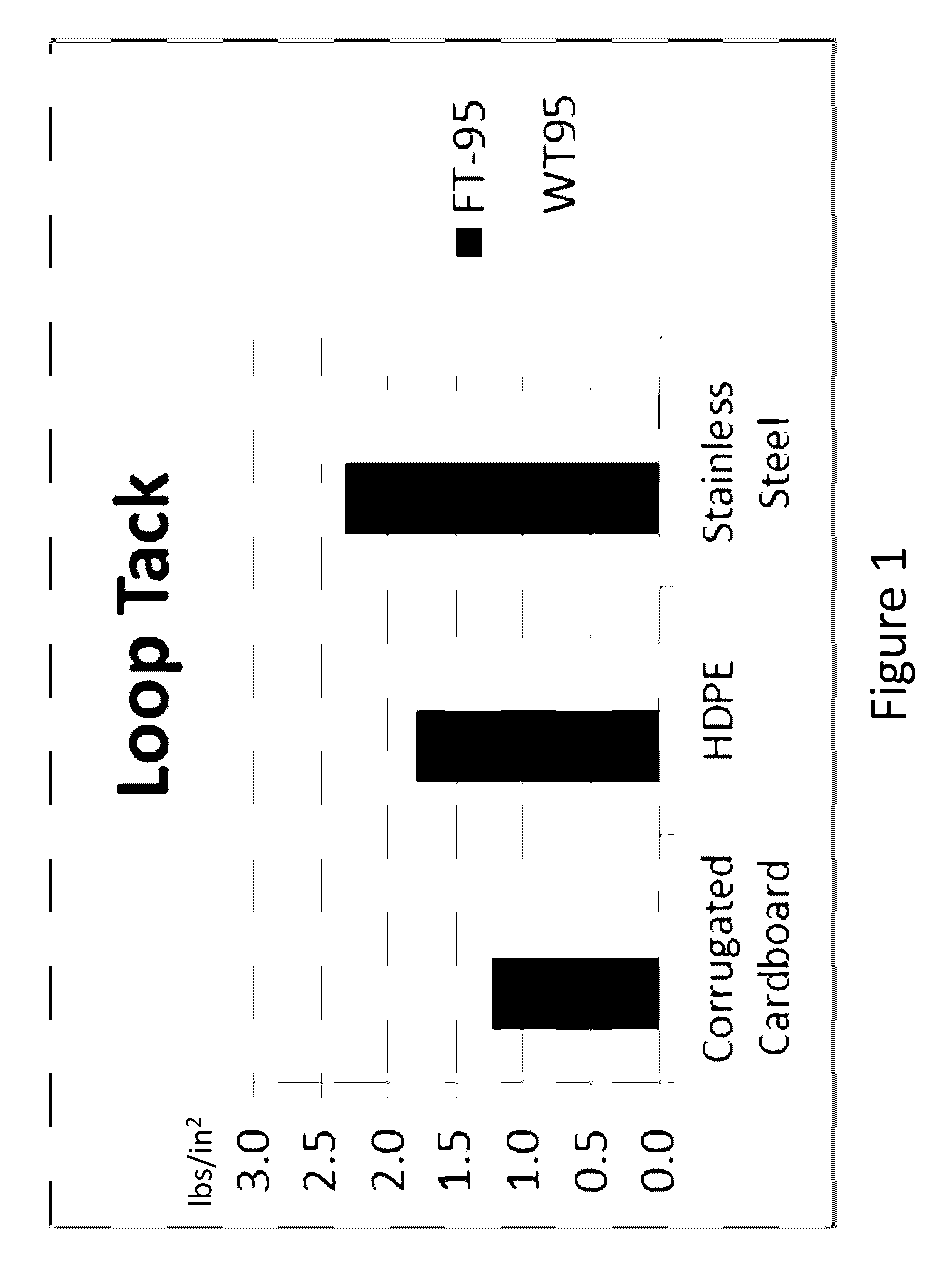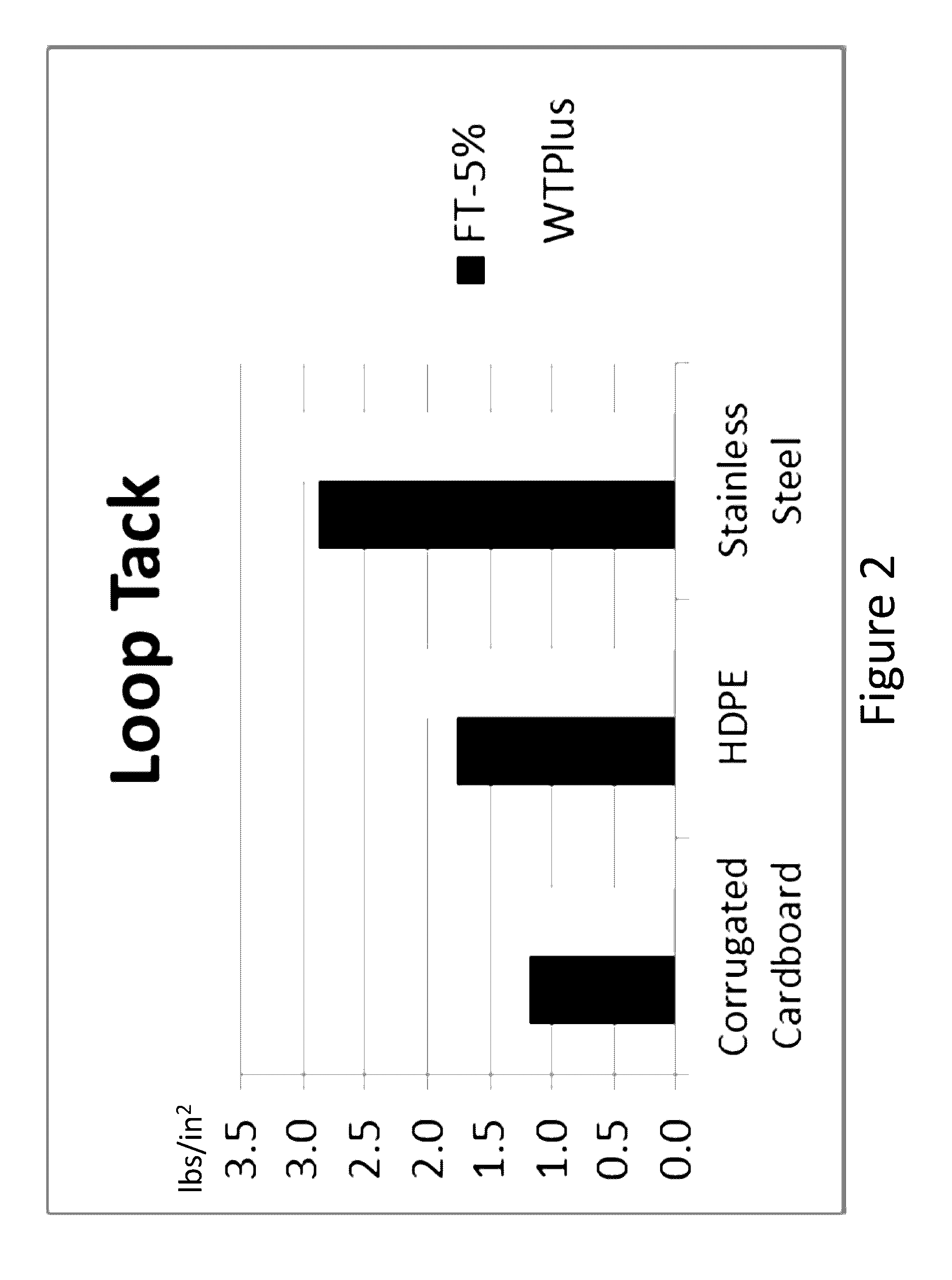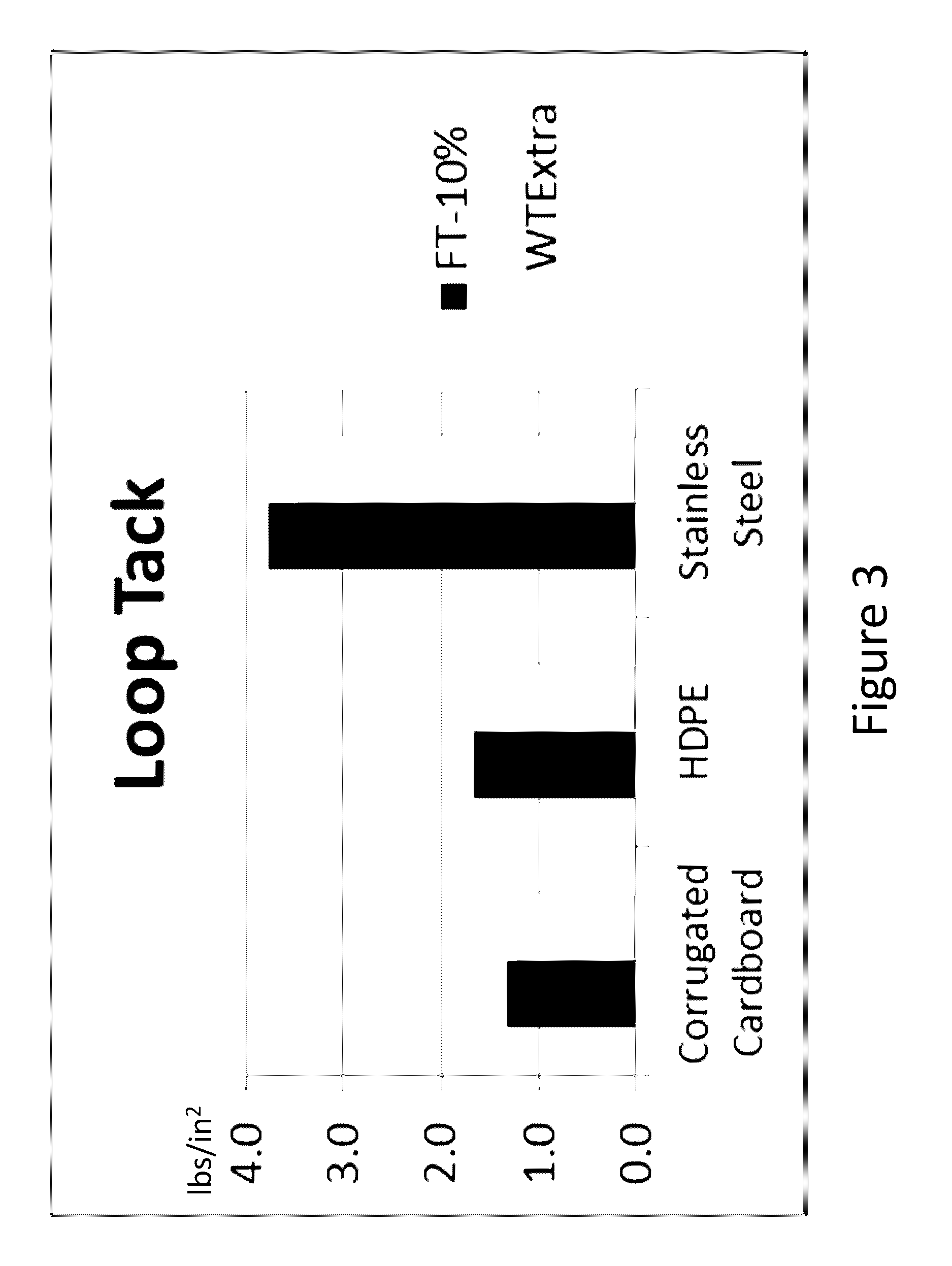Farnesene-based tackifying resins and adhesive compositions containing the same
a technology of tackifying resin and farnesene, which is applied in the direction of film/foil adhesives, other rubber adhesives, adhesive types, etc., can solve the problem of shortening the monomer for the production of tackifying resin, and achieve the effect of improving the efficiency of production of farnesen
- Summary
- Abstract
- Description
- Claims
- Application Information
AI Technical Summary
Benefits of technology
Problems solved by technology
Method used
Image
Examples
example 1
Copolymerization of Farnesene and 2-Methyl-2-Butene
[0056]Sample 1 was prepared in a round bottom flask (reactor) equipped with a stirrer that was purged with nitrogen for 30 minutes. 20 g of toluene were added to the reactor and the contents warmed to 25° C. 93 g of β-farnesene were blended with 100 g of toluene solvent to prepare the monomer feed. 2.25 g of AlCl3 was divided into three aliquots of approximately 0.75 g. A 0.75 g aliquot of AlCl3 was added to the toluene charge followed by a continuous addition of the monomer feed to the stirred reactor at a rate of 4.5 ml per minute. When half of the feed had been added, an additional aliquot of 0.75 g of AlCl3 was added. After the last of the monomer feed had been added, a third aliquot of 0.75 g of AlCl3 was added and the mixture stirred at temperature for an 40 minutes. The reaction was then quenched by the addition of 100 g aqueous 2-propanol (25%). After agitating the mixture, the layers are allowed to separate. The organic pha...
example 2
Copolymerization of Farnesene, Piperylene, Alpha-Methylstyrene, and 2-Methyl-2-Butene
[0057]Sample 2 was prepared in a round bottom flask (reactor) equipped with a stirrer that was purged with nitrogen for 30 minutes. 20 g of toluene were added to the reactor and the contents warmed to 30° C. 43.6 g of 0-farnesene, 6.0 g of 2-methyl-2-butene, 2.8 g α-methylstyrene, and 2.0 g of piperylene concentrate were blended with 48.1 g of MPO to prepare the monomer feed. 1.0 g of AlCl3 was divided into two 0.5 g aliquots. A 0.5 g aliquot of AlCl3 was added to the toluene charge followed by a continuous addition of the monomer feed to the stirred reactor at a fixed rate of 2.5 ml per minute. After the addition of 50 mL of feed, a second aliquot of 0.5 g of AlCl3 was added. After adding the last of the monomer feed to the reaction mixture, the mixture was stirred at temperature for an additional 45 minutes. The reaction was then quenched by the addition of 50 g aqueous 2-propanol (25%). After agi...
example 3
Copolymerization of Farnesene, Piperylene, Alpha-Methylstyrene, and 2-Methyl-2-Butene
[0058]Sample 3 was prepared in a round bottom flask (reactor) equipped with a stirrer that was purged with nitrogen for 30 minutes. 20 g of toluene were added to the reactor and the contents warmed to 30° C. 42.1 g of β-farnesene, 2.5 g of 2-methyl-2-butene, 5.5 g α-methylstyrene, and 2.0 g of piperylene concentrate were blended with 48.1 g of MPO to prepare the monomer feed. 1.0 g of AlCl3 was divided into two 0.5 g aliquots. A 0.5 g aliquot of AlCl3 was added to the toluene charge followed by a continuous addition of the monomer feed to the stirred reactor at a fixed rate of 2.5 ml per minute. After the addition of 50 mL of feed, a second aliquot of 0.5 g of AlCl3 was added. After the last of the monomer feed the reaction mixture had been added, the mixture was stirred at temperature for an additional 45 minutes. The reaction was then quenched by the addition of 50 g aqueous 2-propanol (25%). Afte...
PUM
| Property | Measurement | Unit |
|---|---|---|
| softening point | aaaaa | aaaaa |
| mol % | aaaaa | aaaaa |
| mol % | aaaaa | aaaaa |
Abstract
Description
Claims
Application Information
 Login to View More
Login to View More - R&D
- Intellectual Property
- Life Sciences
- Materials
- Tech Scout
- Unparalleled Data Quality
- Higher Quality Content
- 60% Fewer Hallucinations
Browse by: Latest US Patents, China's latest patents, Technical Efficacy Thesaurus, Application Domain, Technology Topic, Popular Technical Reports.
© 2025 PatSnap. All rights reserved.Legal|Privacy policy|Modern Slavery Act Transparency Statement|Sitemap|About US| Contact US: help@patsnap.com



